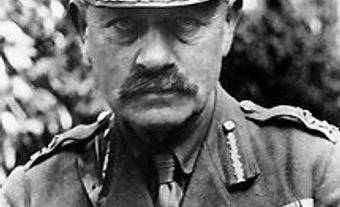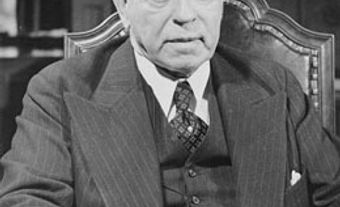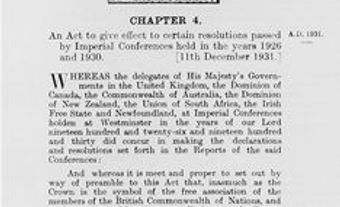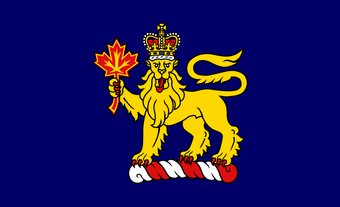The King-Byng Affair was a constitutional crisis that happened in 1926. It pitted the powers of a prime minister against the powers of a governor general. It began when Prime Minister William Lyon Mackenzie King asked Governor General Lord Julian Byng to dissolve Parliament and call a new election. Byng refused. It ended with King winning another election. Since then, no governor general has publicly refused the advice of a prime minister.
This article is a plain-language summary of the King-Byng Affair. If you are interested in reading about this topic in more depth, please see our full-length entry: King-Byng Affair.

King's Minority Government
The affair began with the federal election on 29 October 1925. The Liberals won 101 seats. The Conservatives won 116. Progressive, Labour and Independent candidates combined for 28 seats. William Lyon Mackenzie King was the Liberal leader. He was also the prime minister of the previous Parliament. He declined to turn power over to the Conservatives. Instead, he met with the House of Commons to let it decide who should govern. This was his right. With the support of the Progressives, the Liberals formed a minority government. This lasted until 25 June 1926, when the King government lost a confidence vote over a scandal in the customs office.
But before that happened, King asked the governor general to dissolve Parliament and call a new election. Byng declined. The move was unprecedented. Byng instead asked the opposition Conservatives to form a government. The Conservatives were the largest single party in the House. They were led by Arthur Meighen.
King resigned. He informed Parliament he was no longer prime minister. Meighen and the Conservatives formed a minority government.

Meighen becomes Prime Minister
At the time, if a Member of Parliament was appointed to a cabinet post, he had to resign his seat. He then had to seek re-election in a by-election. But Meighen did not take this approach. He gave up his own seat, but named fellow Conservatives as acting ministers, or ministers without portfolio. In his view, this meant they did not need to resign. But King and the Liberals thought he was wrong. If the new ministers were to legally run the government, they must first resign. If they did not hold office legally, then they had no right to govern.
The Conservatives were in power for only three days. They stayed through four parliamentary votes. But they lost a fifth vote. Meighen asked Byng to dissolve the government and call an election. Byng said yes.

King Wins 1926 Election
The election was called for 14 September 1926. Meighen accused the Liberals of corruption. King ran mainly on the constitutional issue. He framed it as a British governor general interfering with the rights of Canadians to govern themselves.
King’s Liberals won a majority. Out of 245 House seats, they won 128. The Tories won 91. The Progressives and others had 26 seats. (See also Elections of 1925 and 1926.) The Liberals governed until the 1930 election.
Legal Reform
The King-Byng Affair was discussed at the Imperial Conference of 1926. That meeting began to put legal substance to the idea that Britain and the Commonwealth countries were "equal in status."
On 11 December 1931, the Statute of Westminster was passed by the British Parliament. It was requested by Canada, Australia, New Zealand and South Africa. The statute clarified the powers of those parliaments. It granted them full legal freedom except in areas of their choice. Since then, Canada’s governors general have always followed the advice of the prime minister.

 Share on Facebook
Share on Facebook Share on X
Share on X Share by Email
Share by Email Share on Google Classroom
Share on Google Classroom




